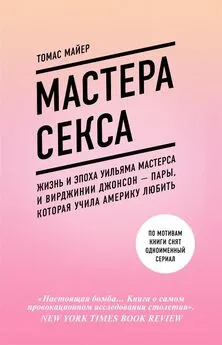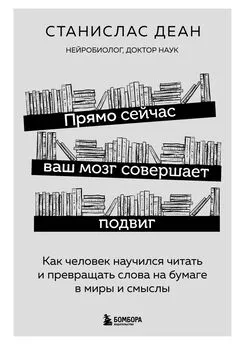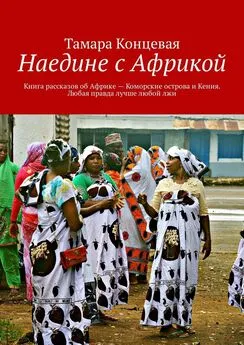Станислас Деан - Как мы учимся. Почему мозг учится лучше, чем любая машина… пока
- Название:Как мы учимся. Почему мозг учится лучше, чем любая машина… пока
- Автор:
- Жанр:
- Издательство:Эксмо
- Год:2021
- Город:Москва
- ISBN:978-5-04-113024-4
- Рейтинг:
- Избранное:Добавить в избранное
-
Отзывы:
-
Ваша оценка:
Станислас Деан - Как мы учимся. Почему мозг учится лучше, чем любая машина… пока краткое содержание
В формате PDF A4 сохранен издательский макет.
Как мы учимся. Почему мозг учится лучше, чем любая машина… пока - читать онлайн бесплатно ознакомительный отрывок
Интервал:
Закладка:
Hoeft, F., McCandliss, B. D., Black, J. M., Gantman, A., Zakerani, N., Hulme, C., Gabrieli, J. D. E. (2011). Neural systems predicting long-term outcome in dyslexia. Proceedings of the National Academy of Sciences , 108(1), 361–366.
Holtmaat, A., & Caroni, P. (2016). Functional and structural underpinnings of neuronal assembly formation in learning. Nature Neuroscience , 19(12), 1553–1562.
Horikawa, T., Tamaki, M., Miyawaki, Y., & Kamitani, Y. (2013). Neural decoding of visual imagery during sleep. Science , 340(6132), 639–642.
Houdé, O., Zago, L., Mellet, E., Moutier, S., Pineau, A., Mazoyer, B., & Tzourio– Mazoyer, N. (2000). Shifting from the perceptual brain to the logical brain: The neural impact of cognitive inhibition training. Journal of Cognitive Neuroscience , 12(5), 721–728.
Huber, R., Ghilardi, M. F., Massimini, M., & Tononi, G. (2004). Local sleep and learning. Nature , 430(6995), 78–81.
Hurley, M. M., Dennett, D. C., & Adams, R. B. (2011). Inside jokes: Using humor to reverse-engineer the mind . Cambridge, MA: MIT Press.
Huttenlocher, P. R., & Dabholkar, A. S. (1997). Regional differences in synaptogenesis in human cerebral cortex. Journal of Comparative Neurology, 387(2), 167–178.
Hutton, J. S., Horowitz-Kraus, T., Mendelsohn, A. L., DeWitt, T., Holland, S. K., & C-MIND Authorship Consortium. (2015). Home reading environment and brain activation in preschool children listening to stories. Pediatrics , 136(3), 466–478.
Hutton, J. S., Phelan, K., Horowitz-Kraus, T., Dudley, J., Altaye, M., DeWitt, T., & Holland, S. K. (2017). Shared reading quality and brain activation during story listening in preschool-age children. Journal of Pediatrics , 191, 204–211.e1.
Iriki, A. (2005). A prototype of Homo faber : A silent precursor of human intelligence in the tool-using monkey brain. // S. Dehaene, J.-R. Duhamel, M. D. Hauser, & G. Rizzolatti (Eds.), From monkey brain to human brain (pp. 253–271). Cambridge, MA: MIT Press.
Isaacs, E. B., Edmonds, C. J., Lucas, A., & Gadian, D. G. (2001). Calculation difficulties in children of very low birthweight: A neural correlate. Brain , 124(9), 1701–1707.
Isingrini, M., Perrotin, A., & Souchay, C. (2008). Aging, metamemory regulation and executive functioning. Progress in Brain Research , 169, 377–392.
Iuculano, T. (2016). Neurocognitive accounts of developmental dyscalculia and its remediation. Progress in Brain Research , 227, 305–333.
Izard, V., Dehaene-Lambertz, G., & Dehaene, S. (2008). Distinct cerebral pathways for object identity and number in human infants. PLOS Biology , 6(2), 275–285.
Izard, V., Sann, C., Spelke, E. S., & Streri, A. (2009). Newborn infants perceive abstract numbers. Proceedings of the National Academy of Sciences , 106(25), 10382–10385.
Jacob, S. N., & Nieder, A. (2009). Notation-independent representation of fractions in the human parietal cortex. Journal of Neuroscience , 29(14), 4652–4657.
Jacoby, L. L., & Dallas, M. (1981). On the relationship between autobiographical memory and perceptual learning. Journal of Experimental Psychology: General , 110(3), 306–340.
Jaeggi, S. M., Buschkuehl, M., Jonides, J., & Shah, P. (2011). Short– and long-term benefits of cognitive training. Proceedings of the National Academy of Sciences , 108(25), 10081–10086.
James, C. E., Oechslin, M. S., Van De Ville, D., Hauert, C.-A., Descloux, C., & Lazeyras, F. (2014). Musical training intensity yields opposite effects on grey matter density in cognitive versus sensorimotor networks. Brain Structure and Function , 219(1), 353–366.
Jaynes, E. T. (2003). Probability theory: The logic of science . Cambridge, MA: Cambridge University Press.
Jenkins, J. G., & Dallenbach, K. M. (1924). Obliviscence during sleep and waking. American Journal of Psychology , 35(4), 605–612.
Ji, D., & Wilson, M. A. (2007). Coordinated memory replay in the visual cortex and hippocampus during sleep. Nature Neuroscience , 10(1), 100–107.
Jiang, X., Long, T., Cao, W., Li, J., Dehaene, S., & Wang, L. (2018). Production of supra-regular spatial sequences by macaque monkeys. Current Biology , 28(12), 1851–1859.
Jiang, X., Shamie, I., Doyle, W. K., Friedman, D., Dugan, P., Devinsky, O., … Halgren, E. (2017). Replay of large-scale spatio-temporal patterns from waking during subsequent NREM sleep in human cortex. Scientific Reports , 7, 17380.
Jo, J., & Bengio, Y. (2017). Measuring the tendency of CNNs to learn surface statistical regularities. arxiv.org/abs/1711.11561.
Johansson, F., Jirenhed, D.-A., Rasmussen, A., Zucca, R., & Hesslow, G. (2014). Memory trace and timing mechanism localized to cerebellar Purkinje cells. Proceedings of the National Academy of Sciences , 11 (41), 14930–14934.
Johnson, J. S., & Newport, E. L. (1989). Critical period effects in second language learning: The influence of maturational state on the acquisition of English as a second language. Cognitive Psychology, 21(1), 60–99.
Josselyn, S. A., Köhler, S., & Frankland, P. W. (2015). Finding the engram. Nature Reviews Neuroscience , 16(9), 521–534.
Kaminski, J., Call, J., & Fischer, J. (2004). Word learning in a domestic dog: Evidence for «fast mapping». Science , 304(5677), 1682–1683.
Kang, M. J., Hsu, M., Krajbich, I. M., Loewenstein, G., McClure, S. M., Wang, J. T., & Camerer, C. F. (2009). The wick in the candle of learning: Epistemic curiosity activates reward circuitry and enhances memory. Psychological Science , 20(8), 963–973.
Kang, S. H. K., Lindsey, R. V., Mozer, M. C., & Pashler, H. (2014). Retrieval practice over the long term: Should spacing be expanding or equal-interval? Psychonomic Bulletin and Review , 21(6), 1544–1550.
Kanjlia, S., Lane, C., Feigenson, L., & Bedny, M. (2016). Absence of visual experience modifies the neural basis of numerical thinking. Proceedings of the National Academy of Sciences , 113(40), 11172–11177.
Kano, T., Brockie, P. J., Sassa, T., Fujimoto, H., Kawahara, Y., Iino, Y., … Maricq, A. V. (2008). Memory in Caenorhabditis elegans is mediated by NMDA-type ionotropic glutamate receptors. Current Biology , 18(13), 1010–1015.
Kaplan, F., & Oudeyer, P.-Y. (2007). In search of the neural circuits of intrinsic motivation. Frontiers in Neuroscience , 1(1), 225–236.
Kapur, S., Craik, F. I., Tulving, E., Wilson, A. A., Houle, S., & Brown, G. M. (1994). Neuroanatomical correlates of encoding in episodic memory: Levels of processing effect. Proceedings of the National Academy of Sciences , 91(6), 2008–2011.
Karni, A., Tanne, D., Rubenstein, B. S., Askenasy, J., & Sagi, D. (1994). Dependence on REM sleep of overnight improvement of a perceptual skill. Science , 265(5172), 679–682.
Karpicke, J. D., & Roediger, H. L. (2008). The critical importance of retrieval for learning. Science , 319(5865), 966–968.
Kastner, S., & Ungerleider, L. G. (2000). Mechanisms of visual attention in the human cortex. Annual Review of Neuroscience , 23, 315–341.
Keller, H. (1903). The story of my life . New York, NY: Doubleday, Page and Co.
Kellman, P. J., & Spelke, E. S. (1983). Perception of partly occluded objects in infancy. Cognitive Psychology , 15(4), 483–524.
Kemp, C., & Tenenbaum, J. B. (2008). The discovery of structural form. Proceedings of the National Academy of Sciences , 105(31), 10687–10692.
Kidd, C., Piantadosi, S. T., & Aslin, R. N. (2012). The Goldilocks effect: Human infants allocate attention to visual sequences that are neither too simple nor too complex. PLOS ONE , 7(5), e36399.
Kidd, C., Piantadosi, S. T., & Aslin, R. N. (2014). The Goldilocks effect in infant auditory attention. Child Development , 85(5), 1795–1804.
Kilgard, M. P., & Merzenich, M. M. (1998). Cortical map reorganization enabled by nucleus basalis activity. Science , 279(5357), 1714–1718.
Kim, J. J., & Diamond, D. M. (2002). The stressed hippocampus, synaptic plasticity and lost memories. Nature Reviews Neuroscience , 3(6), 453–462.
Kim, W. B., & Cho, J.-H. (2017). Encoding of discriminative fear memory by input-specific LTP in the amygdala. Neuron , 95(5), 1129–1146.
Kirschner, P. A., Sweller, J., & Clark, R. E. (2006). Why minimal guidance during instruction does not work: An analysis of the failure of constructivist, discovery, problem-based, experiential, and inquiry-based teaching. Educational Psychologist , 41(2), 75–86.
Kirschner, P. A., & van Merriënboer, J. J. G. (2013). Do learners really know best? Urban legends in education. Educational Psychologist , 48(3), 169–183.
Kitamura, T., Ogawa, S. K., Roy, D. S., Okuyama, T., Morrissey, M. D., Smith, L. M., Tonegawa, S. (2017). Engrams and circuits crucial for systems consolidation of a memory. Science , 356(6333), 73–78.
Klingberg, T. (2010). Training and plasticity of working memory. Trends in Cognitive Sciences , 14(7), 317–324.
Knops, A., Thirion, B., Hubbard, E. M., Michel, V., & Dehaene, S. (2009). Recruitment of an area involved in eye movements during mental arithmetic. Science , 324(5934), 1583–1585.
Knops, A., Viarouge, A., & Dehaene, S. (2009). Dynamic representations underlying symbolic and nonsymbolic calculation: Evidence from the operational momentum effect. Attention, Perception, and Psychophysics , 71(4), 803–821.
Knudsen, E. I., & Knudsen, P. F. (1990). Sensitive and critical periods for visual calibration of sound localization by barn owls. Journal of Neuroscience , 10(1), 222–232.
Knudsen, E. I., Zheng, W., & DeBello, W. M. (2000). Traces of learning in the auditory localization pathway. Proceedings of the National Academy of Sciences , 97(22), 11815–11820.
Koechlin, E., Dehaene, S., & Mehler, J. (1997). Numerical transformations in five-month-old human infants. Mathematical Cognition , 3(2), 89–104.
Koechlin, E., Ody, C., & Kouneiher, F. (2003). The architecture of cognitive control in the human prefrontal cortex. Science , 302(5648), 1181–1185.
Koepp, M. J., Gunn, R. N., Lawrence, A. D., Cunningham, V. J., Dagher, A., Jones, T., … Grasby, P. M. (1998). Evidence for striatal dopamine release during a video game. Nature , 393(6682), 266–268.
Kolinsky, R., Morais, J., Content, A., & Cary, L. (1987). Finding parts within figures: A developmental study. Perception , 16(3), 399–407.
Kolinsky, R., Verhaeghe, A., Fernandes, T., Mengarda, E. J., Grimm-Cabral, L., & Morais, J. (2011). Enantiomorphy through the looking glass: Literacy effects on mirror-image discrimination. Journal of Experimental Psychology: General , 140(2), 210–238.
Kontra, C., Goldin-Meadow, S., & Beilock, S. L. (2012). Embodied learning across the life span. Topics in Cognitive Science , 4(4), 731–739.
Kontra, C., Lyons, D. J., Fischer, S. M., & Beilock, S. L. (2015). Physical experience enhances science learning. Psychological Science , 26(6), 737–749.
Kouider, S., Stahlhut, C., Gelskov, S. V., Barbosa, L. S., Dutat, M., de Gardelle, V., Dehaene-Lambertz, G. (2013). A neural marker of perceptual consciousness in infants. Science , 340(6130), 376–380.
Krause, M. R., Zanos, T. P., Csorba, B. A., Pilly, P. K., Choe, J., Phillips, M. E., Pack, C. C. (2017). Transcranial direct current stimulation facilitates associative learning and alters functional connectivity in the primate brain. Current Biology , 27(20), 3086–3096.
Читать дальшеИнтервал:
Закладка:
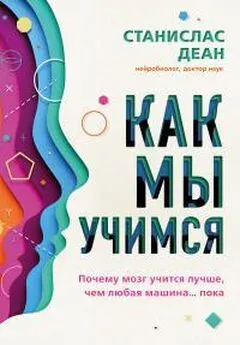
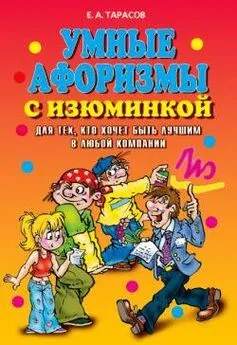



![Кэролайн Уилльямс - Мой продуктивный мозг [Как я проверила на себе лучшие методики саморазвития и что из этого вышло]](/books/1096012/kerolajn-uillyams-moj-produktivnyj-mozg-kak-ya-pro.webp)
